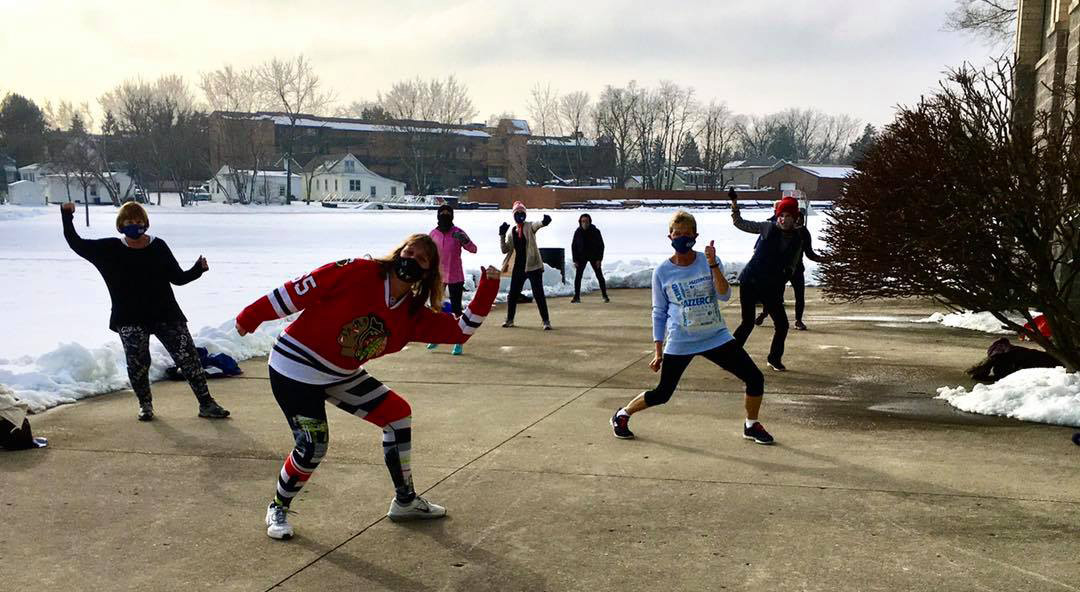There’s an old saying, “sometimes bad things have to happen before good things can.” In trying to find out what good things have happened during the pandemic, we uncovered common threads and unique activities at 10 local agencies. Independent of size and service area, the challenges of providing services and programs were similar. We interviewed 10 executive directors of parks and recreation programs across Illinois, and they shared their insights of meeting and addressing unprecedented challenges.
What’s been the most difficult recovery?
The general consensus across the board is they are offering the same services as before with a few changes and less participation. People are still hesitant to return to indoor spaces. Face coverings and the assurance of clean surfaces are top of mind for many.
Brad Staab, director of the Joliet Park District, noted their Inwood Athletic Club fitness membership is half of what it was pre-pandemic, resulting in significant revenue loss. Their 50-plus age group has been slow to come back inside, so attempts at increasing the fitness center use include having less equipment to improve spacing between users.
Wauconda Park District Director Tim Staton shared their fitness membership, daycare, and before and after school programs have significantly dropped and have been slow to recover. Fitness membership has dropped from roughly 600 to 300.
Rich Zielke, director of the Oswegoland Park District, noted that providing adequate staff and volunteers for programs has been challenging. He believes that early layoffs at his agency in 2020 combined with health concerns and new work opportunities have made it difficult to rehire the staff required for their programs.
What changes have occurred in delivering services and programs?
Gary Major, director of the West Chicago Park District highlighted the following changes within his agency:
- Safety awareness that includes wet wipes versus towels, glass partitions, and heightened cleanliness standards
- Increase demand and participation in outdoor activities versus indoor activities
- Staff changes
- Understanding how to use indoor space so users are comfortable and safe
- Reducing class sizes/capacities to increase safety
Kelly Rajzer, director of Romeoville Parks and Recreation noted that their community’s online registration has increased significantly along with the length and time between programming to improve safety. Like many other agencies, outdoor programming and activities have increased to maintain participation, including their novelty events like You’ve Been Grinched, Hall-O-Boo Drive Thru, and a drive-thru holiday lights show.
 This Jazzercise® class meets outside unless the temperature drops below 26 degrees or if the snow isn’t removed from the patio. Photo courtesy of the Wauconda Park District.
This Jazzercise® class meets outside unless the temperature drops below 26 degrees or if the snow isn’t removed from the patio. Photo courtesy of the Wauconda Park District.
Positive Changes
The opportunity for retooling and reimagining was noted by Gary Major. At an operational level, he believes the pandemic brought staff closer together as a more horizontal organization that is stronger internally. Their focus is to be more of a special events versus a program provider. He believes the pandemic has provided the opportunity to essentially start over and rebuild.
Dave Peterson, director at the Dundee Township Park District noted, “from a financial perspective, some rightsizing of the number of employees has occurred.” After the food and beverage operations at their clubhouse were shut down for several months, they reopened with two less employees due to outsourcing all events (weddings, showers, parties, etc.) The district only staffs the Randall Oaks Golf clubhouse for day-to-day food sales along with Taco Tuesday and the Friday Night Fish Fry.
Golf participation improved at every interviewed agency during the pandemic. At the Elmhurst Park District, Jim Rogers noted that before the pandemic, golfers paid their fee at the clubhouse. Now, golfers make reservations and pay online, resulting in varied pricing that increase revenue based on the increased demand. It’s a win-win, golfers like the new system and the agency is more profitable.
Doug Damery, director of Normal Parks and Recreation, noted that golf, trail use, and pickleball participation have increased significantly. Tennis courts that were scheduled for resurfacing were instead resurfaced and stripped for pickleball based on declining tennis participation and increasing pickleball court demand.
Bill Riordan of the Lockport Park District shared the positive impact of virtual meetings, including less driving time for staff and thus reduced pollution. Additionally, the facility’s gym has seen an increase in use and offers more opportunities for social distancing.
Common Threads
The discussions about the effect of the pandemic uncovered common responses. Ron Schneider, executive director of the Freeport Park District said, “the pandemic has brought people closer together in a strange way. Thinking outside the box, making changes, and staying stronger by working together have been key components.” Evaluating programs and events to make changes as required are now the norm along with stronger communication with other parks and recreation agencies.
Flexibility and adaptability are the new norms. Or as Jim Rogers quoted an old saying, 'disruption leads to adaptation.'
Daniel Atilano
At the end of the day, good things have come about during the pandemic. The pandemic emphasized the importance of evaluating what we have always done, so that we are prepared for the future. Flexibility and adaptability are the new norms. Or as Jim Rogers quoted an old saying, “disruption leads to adaptation.”